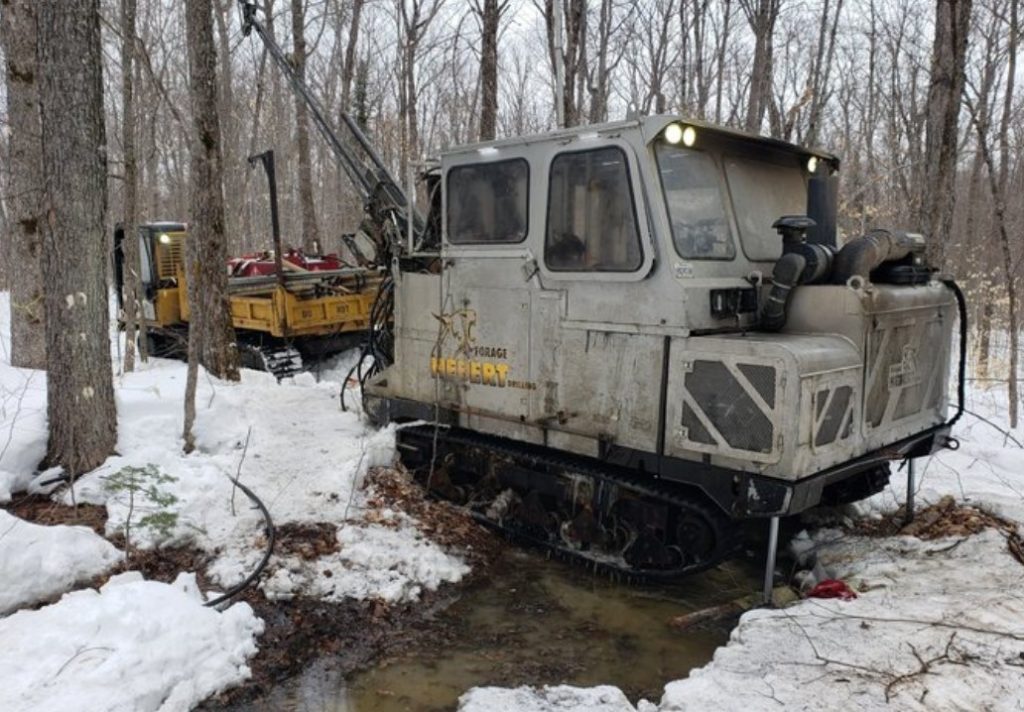Graphano Energy drills 6.26% Cg over 13.7 metres at Lac Aux Bouleaux, Quebec

Graphano Energy Ltd. [GEL-TSXV; 97G0-FSE] reported results of the exploration drilling of Zone 3 on its 100%-owned Lac Aux Bouleaux (LAB) graphite property in Quebec.
Luisa Moreno, CEO, stated: “The recent drill program has been very successful, with significant graphite mineralization being intersected in almost all the holes completed on Zone 3. Our drilling program to date suggests that the graphite mineralization at Lac Aux Bouleaux is structurally folded which can enhance the economic potential of the various zones of mineralization. We are encouraged to continue with the exploration drilling program for all the remaining zones followed by a comprehensive resource drilling program later this year. We are confident that we will define a compliant mineral resource to supply graphite to the Western battery supply chain in the near term, thus continuing to make this region of Quebec the only source of graphite in North America.”
A total of 25 drill holes were completed for a total of 1,779 metres. Given that surface mineralization was previously exposed during Graphano’s trenching program intermittently along the length of zone 3, most holes were shallow (less than 60 metres) to test the immediate depth and thickness of the graphite mineralization. Twenty-three holes were drilled to evaluate Zone 3 over a length of approximately 500 metres. One hole was drilled in zone 8 and another one in zone 4. Highlights of the drilling results are provided below.
Highlights at the Zone 3 target: A very successful drill program with 15 of the 23 drill holes (65%) intersecting significant graphite mineralization over the 500-metre length of Zone 3 tested by this first phase of exploration drilling. The mineralization outlined remains open for continued expansion.
Results include drill hole LB22-33 that intersected 6.26% graphitic carbon (Cg) over 13.7 metres starting at 14 drilled depth, including 11.95% Cg over 4.7 metres at 14 metres. LB22-45 intersected 9.09% Cg over eight metres at 68 metres.
LB22-52 intersected 7.17% Cg over nine metres at 36 metres. LB22-39 intersected 4.72% Cg over 11.6 metres at 36.4 metres, including 6.56% Cg over 6.6 metres at 36.4 metres. LB22-34 intersected 5.82% Cg over nine metrres at 38 metres, including 6.25% Cg over 3.50 metres at 38 metres and 7.28% Cg over four metres at 43 metres.
LB22-32 intersected 6.28% Cg over eight metres at 18.5 metres. LB22-48 intersected 9.53% Cg over five metres at 19.5 metres.
Zone 8 target: Only a single drill hole, LB22-54, has been completed to date, intersecting 4.12% Cg over six metres at 26 metres drilled depth, which indicates significant potential for this virtually unexplored target. Based on airborne electromagnetic results the Zone 8 target has an approximate 1,000-metre length requiring further exploration. All intersections reported are based on drilled width and have not been converted to true width.
One method of evaluating and visually demonstrating the exploration significance of a drill program and thus the indicated economic potential is to calculate a drill hole’s mineralized zone thickness multiplied by the zone’s grade.
The exploration drilling to date seems to suggest that the relatively high-grade LAB graphite horizons are locally folded and structurally thickened, which can enhance the potential for economic mineralization. This is similar to the Lac des Iles (LDI) deposit that has been mined for over 30 years and is located immediately adjacent to Graphano’s LAB property.
Ms. Moreno added, “The combination of the excellent accessibility of the property and the near-surface mineralized zones gives Graphano great encouragement for the development of LAB at a much faster pace than usual.”
Zone 3 on the property is one of the eight target areas identified from the 2015 airborne high-resolution magnetic (MAG) and time-domain electromagnetic (TDEM) survey completed on the LAB property. These targets were further explored through ground geophysical surveying and, prior to drilling, additional trenching and channel sampling were performed to identify the best areas for drilling and orientation.
The majority of drill holes completed on the Zone 3 target intersected near-surface mineralized horizons ranging from one metre to 14 metres in thickness (core length) over a 500-metre length, thus far by drilling. The graphite mineralization observed during the drilling is hosted within a sequence of marble, paragneiss and quartzites.
